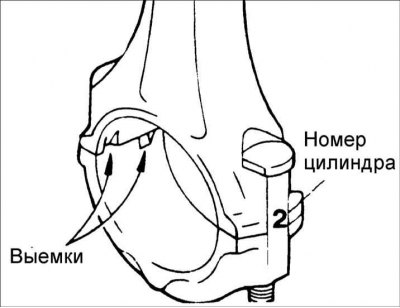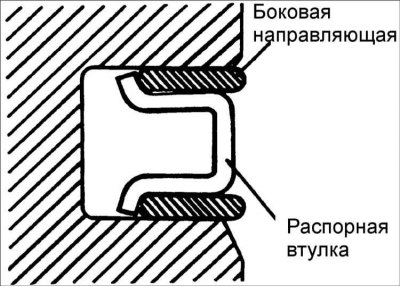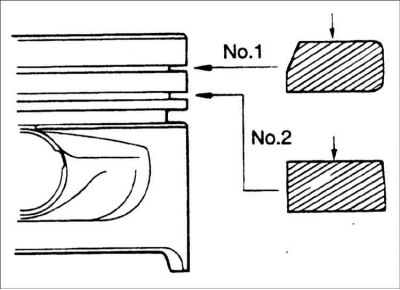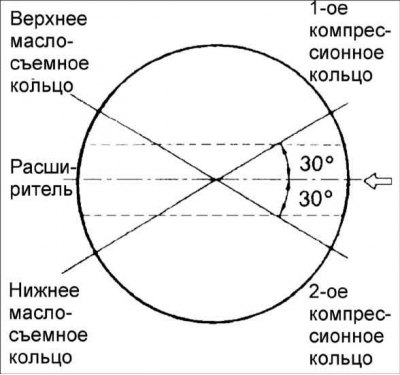Piston and connecting rod

1 - connecting rod; 2 - piston pin; 3 - piston; 4 - oil scraper ring; 5 - compression ring No. 2; 6 - compression ring No. 1; 7 - the upper shell of the connecting rod bearing; 8 - lower shell of the connecting rod bearing; 9 – connecting rod cover; 10 - nut, 32–35 Nm.
Withdrawal

Warning! Keep the connecting rod caps with the appropriate connecting rods for proper reinstallation in the engine cylinders.
1. Loosen the nuts and remove the connecting rod cap and the lower connecting rod bearing. For protection of necks of a cranked shaft put on bolts of fastening of covers of rods pieces of a rubber or plastic tube.
2. Use a block of wood or a hammer handle to push the piston and connecting rod out of the cylinder.
Examination
1. When installing, make sure the connecting rod and connecting rod cap match the cylinder number they are installed into. When installing a new connecting rod, make sure that the marks that determine its position are on the same side as the marks on the other connecting rods.
2. Replace connecting rod if both bearing surfaces are damaged. Also replace the connecting rod if there is wear or damage to the piston pin mating surface.

3. Check the bend of each connecting rod. If necessary, replace connecting rods. Replace the connecting rod together with the connecting rod cover.
- Allowable crank bend: 0.05 mm / 100 mm length
- Allowable crank twist: 0.1 mm / 100 mm length
Installation

1. Install spacer sleeve.
2. Install the top side guide. To install the side guide, first place one end of the side guide between the wall of the piston ring groove and the spacer, press it in, then press it all the way into the piston groove.
Warning! Do not use piston ring pliers when installing the side guide.

3. Install the low side rail in the same way.
4. Using pliers to open the piston rings, install compression ring No. 2.

5. Using pliers to open the piston rings, install the compression ring No. 1.
6. Apply a thin coat of engine oil to the piston and piston rings.

7. Position the piston ring locks as shown.
8. Compress the piston rings on the piston with a special tool.
9. Install the piston with piston rings over the first cylinder, with the mark on the piston facing the front of the cylinder block.
10. Using a hammer handle, press the piston into the cylinder so that the lower end of the connecting rod rests on the crankshaft journal.
11. Install the connecting rod bearing into the connecting rod cap.

12. Install the connecting rod cap and secure with nuts.
Tightening torque: 32–35 Nm

13. Using a feeler gauge inserted between the connecting rod and the crankshaft, measure the connecting rod backlash.
- Nominal connecting rod backlash: 0.10 - 0.25 mm
- Maximum allowable gap: 0.40 mm
